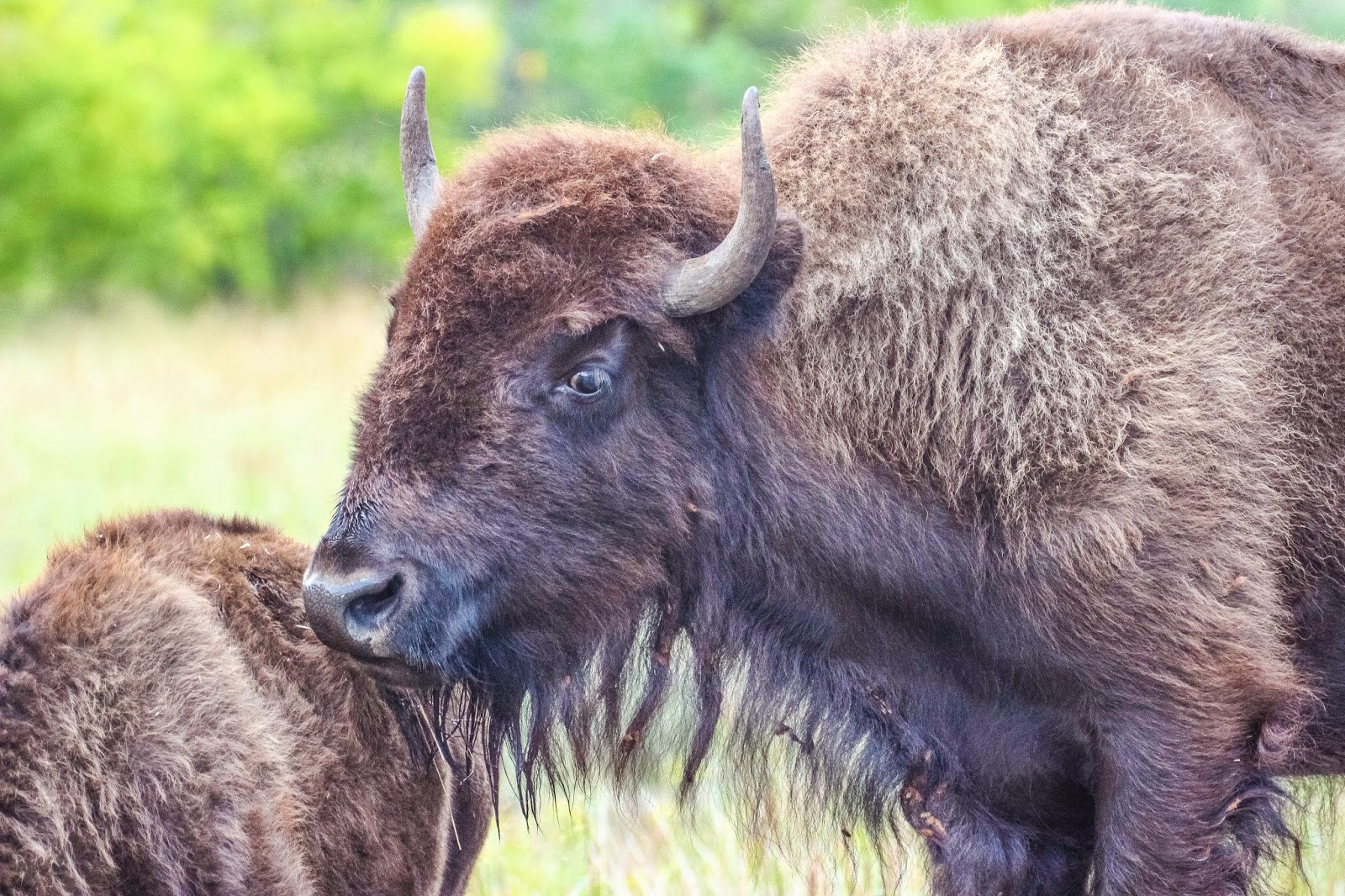Bison is to southwestern South Dakota what alligator is to Florida and Louisiana. It is on the menu of many restaurants and raw buffalo meat is sold in grocery stores. One of my main objectives in visiting Custer State Park and Badlands National Park was to see the bison herds they have there. Our expectations were rewarded, particularly in Custer State Park.
Custer State Park has one of the world's largest public bison herds, around 1,300 individuals in the summer and fall. Each year about 300 bison are culled from the herd for sale in order to balance the number of bison that can exist on the grassland that is available, so the population declines by that number, to be increased by calves born in the spring. The majority of the bison are found in the southern part of the park, in the vicinity of the Buffalo Corrals, Red Valley Road, the Wildlife Loop Road on either side, and along the dirt roads covering the southern section, such as Oak Draw Road, Fisherman Flats Road and North Lame Johnny Road.
The bison in Badlands National Park number between 300 and 500 (the only estimate I was able to find on-line). They are located along the Sage Creek Rim Road, a dirt road that covers the northern rim of the park. We found the bison we saw toward the latter part of the road, where the Badlands petered out and were replaced by hills and grasslands. The biggest herd we saw was about 30 individuals just a few hundred yards from the western entrance to the park. Before that we saw isolated individuals, the greatest number right in the Sage Creek Campground, where we saw about seven bison in the campground or right next to it. The most fun animal was a single bull that we encountered just off the road. Several times he started and ran and we were amazed at how quickly he moved and how his muscles rippled as he did so. It was an amazing example of power and quickness.
 |
| This big boy was one of two bulls walking through the Sage Creek Campground where small tents were still pitched with people milling about them. I would not want to be in a tent with one of these nearby. Once I was in a bivvy bag with a black bear nearby in the Sierras and I worried it might step on me. One of these would really cause some worry. |
 |
| This herd was near the west entrance above Scenic, SD. |
Having recently viewed cape buffalo in Africa and these plains bison in South Dakota, I give my nod to the bison for viewing pleasure. They tend to grunt somewhat like the wildebeest and the power exhibited in some of the large bulls was awe inspiring. I suspect that in a head to head match with a cape buffalo a bison would lose - I don't think they are as nasty tempered as the cape buffalo, they don't have as dangerous a head covering and I don't think they share the same protective group mentality. But they are very fun to watch, particularly when they are on the move as I saw them early the one morning.



























I love the picture of the bison tongue. Bizarre! I was surprised by how how woolly the faces of the big bulls were.Some of them could use a shave. I also like the way they take control of the road, forcing people back in their cars and showing who is boss.
ReplyDeleteWe encounter large herds of bison from time to time, mostly around West Yellowstone area. It's always thrilling. As you say, they are shockingly quick, but like to stroll down the center of the road at snail's pace.
ReplyDelete